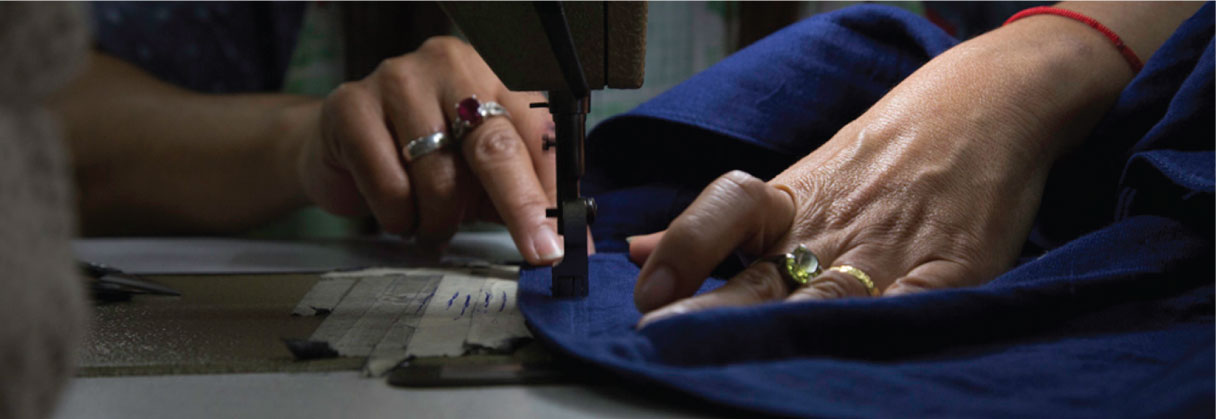
You want to know that your clothing supports those
who make a healthy living and are safe at work?
Good, we do that - and have from the start.

- The following values will always be upheld in a facility that cuts and sews our garments -
- Employment at a factory that sews our garments is freely chosen by the employee.
- Freedom of association and collective bargaining by employees is respected.
- Working conditions are always safe, well lit, with clean air, and are hygienic.
- Child Labor will never be used.
- Living wages will be paid.
- Working hours will not be excessive nor will unhealthy demands for rushed products be made.
- No discrimination is practiced.
- No harsh treatment of any employee is allowed by customer, owner, or manager.
We have valued ethical production since 2011 by working directly with those that are creating our clothing, understanding cultural differences, and speaking the local languages...
- Now we pledge to continue what we have started... with Fair Trade values always in our clothing production.

Before The Transient Design, A Lesson...
Ten years ago, Elizabeth emailed me and asked me to come back to Thailand. Volunteering is such ride, both exciting and humbling. I was definitely going back.
The playground build the summer before changed my life’s direction — but now I was ready to serve with more than just my hands.
Her plan was for me to formalize craft time. She called it the “Income Generation Project.”
Our early products were handmade postcards, beaded jewelry, and herbal ice teas. Attempting to replicate good designs ended up being useless. Each piece became an individual expression from every woman who was there. We didn’t sell very well, but they loved it. At the time, that felt good enough for us.
Then we got a phone call.
A girl named Nam left Wildflower Home a few months earlier because she got a “job.” She wanted to come back. Something wasn’t right but I didn’t know what. Usually the women want to leave Wildflower Home with a job.
My friend Ruong and I drove to go get her. Ruong’s cool. Every morning she would hand me a bag of warm milk to drink and say, “Hey skinny volunteer. Here you go,” or something like that.
We arrived and the area was sort of like a family compound with a few houses. Nam’s building was different. There was no door. There were no windows. The roof overlapped the wall in an open-air manner. The raw, unpainted concrete block walls were turning black — musty and unforgiving. There was a bed, a sewing machine, Nam, and her toddler daughter.
No polite hellos. I carried Nam’s sewing machine, practically her only possession, and we got them out of there without talking to anyone.
She had left the safety of Wildflower Home, without legal paperwork, to support her only child as a single mother. The family that “picked her up” sold cheap clothing in the exact market that we were selling our jewelry in.
This was the first of many “clothing” wake up calls that I have had over the years in Thailand. I am sure things like this happens in more developed countries too. The plight of someone in a difficult situation just trying to get by is not exclusive to a region or race.
I was far more innocent then. It opened my eyes a good bit.
The time we all shared working with Nam for the several months that I remained at Wildflower Home was a whirlwind of personal growth and the braking of cultural barriers. In the end, Nam went back to her village with good money she earned from our project and I got to know the real person behind that cheap shirt you just haggled for on your Thailand vacation.
That volunteer experience certainly set the tone for what would eventually become The Transient Design.
-Aaron

